Long-Term Review
“Cupra Born 2024 Review | Giga Gears Long-Term Test”
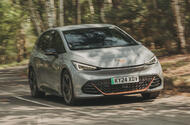 We’ve named it the best and most fun EV. Does it really have no flaws? Let’s find out
We’ve named it the best and most fun EV. Does it really have no flaws? Let’s find out
Why we’re running it: To see if its award-winning reputation survives real-world use
Month 1 - Specs

Life with a Cupra Born: Month 1
Welcoming the Born to the fleet
The EV market is still dominated by SUVs, but there's at least growing competition in the family hatchback class, even if those underfloor batteries mean they do sit a little higher than combustion cars. And the Cupra Born is already standing out from the crowd, with its rear-wheel-drive layout and the promise of fun handling to match traditionally strong EV performance.
Indeed, I was keen to get straight onto interesting roads in the Born, because there's still a lot of hype surrounding it three years after launch. The Spaniard was named Best Electric Car at this year's Autocar Awards, after beating all its rivals to also win our Best Fun EV and Best Affordable EV crowns in the preceding months. We've run a Born on our long-term fleet before, but this time we'll be holding it to even higher standards.
I've been spending some time taking in its design, too. The Born is by no means a rarity in my local area, yet it always catches my eye on the road. I think its bronze exterior design elements look great, and while I probably would have opted for Aurora Blue metallic paint over this rather joyless Vapour Grey, the car still looks the part.
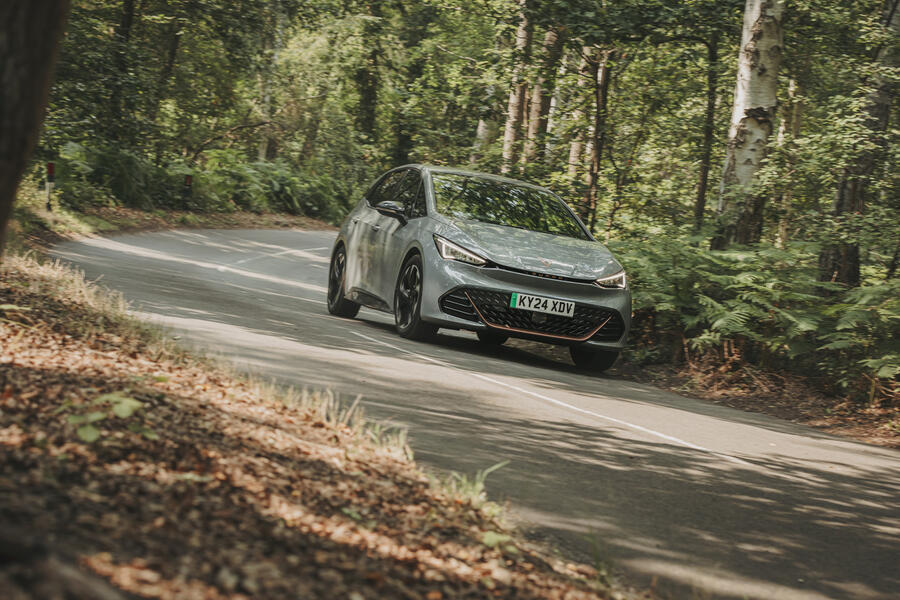
Some may look at the Born's sharp design and dramatic detailing and think it's simply a brash version of the Volkswagen ID 3, but there's more to this sporty hatchback than just a shared platform. While the most potent ID 3 comes with 204bhp and travels from 0-62mph in 7.6sec, the warmest standard Born gets 227bhp and hits the same mark in 6.6sec. That's not quite proper hot hatch territory (that's reserved for the upcoming 322bhp Born VZ), but as far as I'm concerned, it's the ideal level of power for daily driving.
So far, the Born has shown flashes of its fun nature. It’s brilliantly agile and the car’s rear-wheel-drive layout makes it a hoot in the corners, yet it’s also comfortable. There’s a driving mode for every situation, too: Range, Comfort, Individual, Performance and Cupra.
The last of those is the hottest and is easily selected via a conveniently placed button on the steering wheel. It sharpens the accelerator response and adjusts the strength of the regenerative braking for an all-round more engaging drive.

My car is fitted with the 58kWh battery, which gives it an official range of 262 miles, but there’s also a larger 77kWh pack that’s good for 342 miles. It can accept charge at a maximum rate of 120kW (this rises to 135kW for the 77kWh battery), which is enough to get it from 5-80% capacity in 36 minutes.
Prices start at just £35,495 for entry-level V1 trim, whose standard equipment includes LED headlights, a reversing camera, dual-zone climate control, 18in wheels and a heated, leather-wrapped steering wheel.
My one-rung-up V2 car is priced from £37,265 and features 19in wheels, heated front seats, an augmented reality head-up display and, to really seal the deal, heated washer nozzles. That’s a good level of kit, and apart from wireless phone charging, it’s pretty much all that I would be looking for in a new car.
On first impressions, the Born’s cabin is both accommodating and well put together, but there are some frustrations too. As is the Volkswagen Group way nowadays, there are few buttons around the cabin, with Cupra having opted for touchpads and haptic sensors, as Volkswagen did for the ID 3.
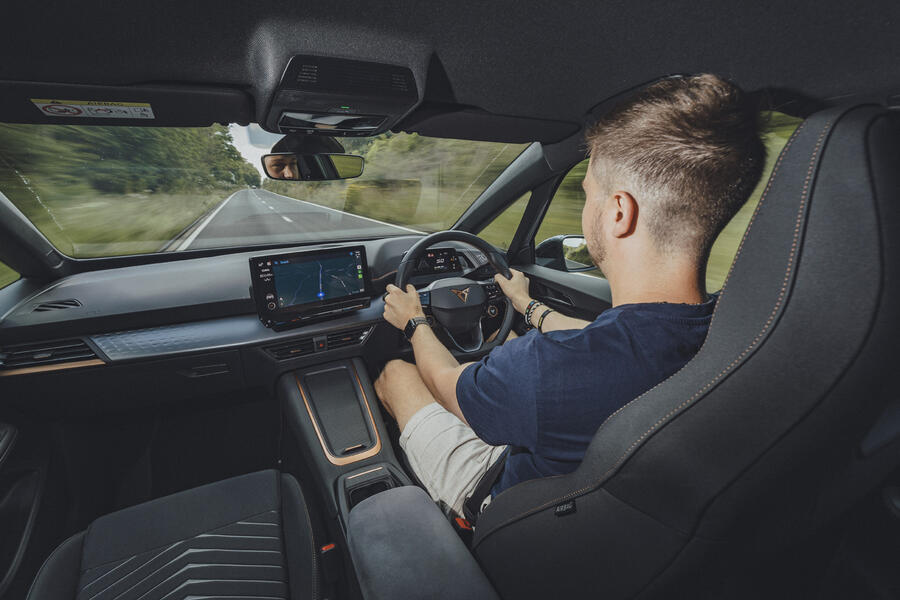
Multimedia switches such as the audio volume controller are positioned on the steering wheel, while other functions are located on a touchpad just behind it, or on the doors. I know from my experience running a Volkswagen ID 4 that these can be incredibly irritating to use, often not responding to inputs or doing so far too slowly.
The same can be said for the infotainment system, which in the Born consists of a mind-bogglingly slow-acting, centrally positioned 12in touchscreen and a far more useful 5.3in digital information display that sits atop the steering column.
I will go into greater detail in forthcoming reports, but issues that I’ve already witnessed include random wireless Apple CarPlay disconnections, ignored inputs, a struggling frame rate and an unresponsive blank screen that requires a reset to resolve.
Aside from that, the cabin is a very practical space, with a lot of storage room for drinks in the centre console. When the Born was launched, it was streets ahead of the ID 3 in terms of perceived interior quality, with plush, microfibre-like materials and soft-touch plastics (although the recent update of the ID 3 closed the gap by introducing more premium materials).

There’s plenty of space in the back too now, and our road testers measured just as much leg room as there is in the BMW 5 Series. Boot space, meanwhile, is 385 litres, which is more than in the MG 4 EV, and increases to 1267 litres with the rear seats folded down. While I have yet to fill the Born with family, my girlfriend is no fan of its sports seats.
As a shorter passenger, she is not able to comfortably rest her head, due to the big hole halfway up the headrest. They’re non-adjustable, so it’s a fair complaint, especially as she’s bashing her head on hard plastic over more severe bumps.
A few inches taller, I myself am waiting to get stuck into life with the Born. Those who have road tested the car have raved about its driving dynamics; let’s see what else it has to offer long-term custodians.
Second Opinion
There’s no denying its dynamic competence or commendable utility credentials, but as the halo product of a notionally sporting brand, the Born feels wanting for a sense of occasion. Copper flourishes can only do so much. Look what Hyundai has done for the Ioniq 5 N (p46). I will be interested to see if Jack finds it more ‘special’ every day than the related Volkswagen ID 3.
Felix Page
Cupra Born 58kWh V2 specification
Specs: Price New £37,265 Price as tested £37,265 Options None
Test Data: Engine Single rear-mounted electric motor, 58kWh battery Power 227bhp Torque 229lb ft Kerb weight 1840kg Top speed 99mph 0-62mph 6.6sec Fuel economy 3.9mpkWh CO2 0g/km Faults Infotainment glitches Expenses None
Citroen C4X 2024 Long-Term Test Review by Giga Gears
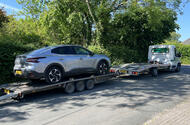 We tested both the petrol and electric versions of Citroen's saloon - with mixed results...
We tested both the petrol and electric versions of Citroen's saloon - with mixed results...
Why we ran it: To see if this electric fastback saloon can outmuscle the growing SUV market
Month 1 - Month 2 - Swapping into the petrol C4 X (Month 3) - Month 4 - Month 5 - Final report - Specs
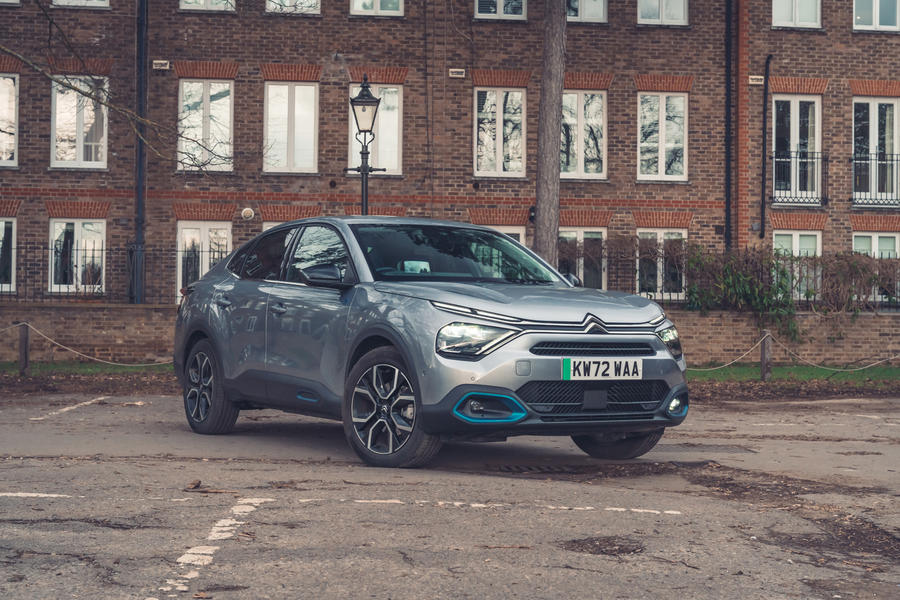
Life with a C4 X: final report
We’ve lived with both ICE and EV versions of the C4 X. So which one gets our vote?
My time with both electric and petrol versions of Citroën's saloon-bodied hatchback is over, and while in general the experience was enjoyable, it all ended in unfortunate fashion.
While driving on the M4 in the daytime, all of the C4 X's interior screens switched off – similar to what we experienced previously with the related Jeep Avenger. I couldn't see how fast I was going, or any other vital driving information, and given I was in the third lane of a motorway that is lined with speed cameras, it was far from ideal.
I nursed the car the 40 or so miles home in lane one unsure if my indicators or lights were also faulty. Weirdly, the problem also seemed to affect other interior functions, such as the indicator noise – now far more tinny than before – and the radio. It even, suspiciously, affected the way the engine sounded, confirming that part of the throaty soundtrack is artificial.
The RAC was called out but even they couldn't diagnose the problem, so Citroën recovered the car. Apparently it was a "software glitch" and the system started working again after a reset. The electric ë-C4 X never suffered any such problem.
I have to say this did sully a good stint with the C4 X. These kinds of faults should never occur – especially on the motorway – and it's not the first Stellantis car in which I've experienced significant electrical issues. I previously ran a Peugeot 308 PHEV estate whose alarm would go off at seemingly random times. That glitch was fixed after a software update.
It's a shame the latest tech meltdown overshadowed the many things I liked about both the petrol and electric C4 X. We know Citroëns always score highly on comfort, and neither car disappointed in that regard.
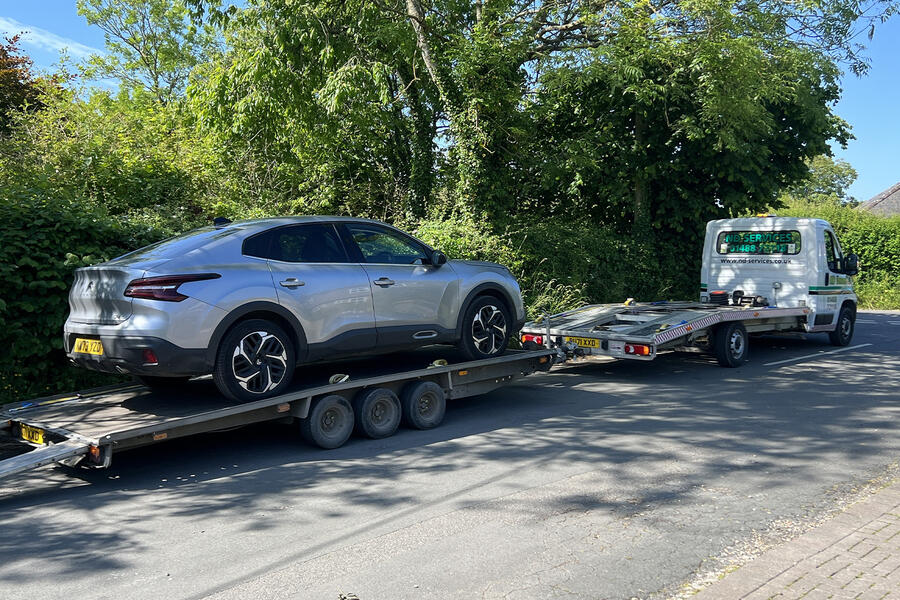
Both models were supremely relaxing, and the seats – leather in the electric car, Alcantara in the petrol – were among the plushest I've sat in. Ride comfort was excellent in both Citroëns, allowing the car to traverse the mountainous speed bumps near my apartment block without an accompanying orthopaedic emergency.
There was always more than enough room inside too, and on the several occasions I carried back-seat passengers, reports from the rear cabin were positive. Boot space was sizeable, although it's not entirely practical if you're loading it anywhere near the bootlid's hinged arms.
They often got in the way of larger suitcases and bags, meaning I'd have to reshuffle my luggage after painstakingly stacking it up. That aside, there was not much between the two cars in terms of overall boot volume, with the ë-C4 X's battery
The gripes I did have appeared across both models. These included the infotainment system, which was responsive enough but confusing when trying to navigate quickly.
The digital driver’s display behind the steering wheel, meanwhile, is a bit too small for my liking, and some of the information was cut off the perimeter of the screen.
I usually just stuck with the head-up display. But even that suffered a graphical glitch, specifically when cruise control was activated, in the form of a large, empty blue square covering half of the display.
Wireless Apple CarPlay proved a godsend, as did wireless phone charging. Also useful were the numerous storage compartments dotted around the car, so effectively concealed that I once lost my keys in them (my fault, not the car’s).
So which C4 X would I prefer to buy? I’m afraid the answer comes down to price. The C4 X petrol starts from £18,775 in entry-level You! specification (£27,965 for our Max-trim test car), while the EV opens at £36,510, nearly twice the price.
That’s quite a saving if you choose the petrol, which would go a long way in fuel costs or even optional extras. Perhaps the best way to buy an ë-C4 X would be to look for a used one: prices for some nearly new examples have already dropped to below those of factory-fresh petrol cars.
You will stand out in a C4 X, whichever one you opt for: in my time with it, I saw no other electric versions and perhaps one or two petrols. But I did notice many more hatch-bodied C4s, so it’s clearly still the more popular choice.
Purchase price aside, I’d lean towards the petrol simply because of the EV’s unremarkable range. I’d usually get no more than 220 miles on a charge, while the petrol would furnish me with around 400 miles per tank at a consistent 50mpg.
While the ë-C4 X’s range will be enough for many drivers, it was more challenging for me given I don’t have access to a home charger and so would usually drive with the air conditioning and heater turned off to preserve battery, often to the annoyance of my passengers.
Ultimately, though, the C4 X is endearing with either a petrol or an electric powertrain, and the past few months have been the most comfortable I’ve experienced driving in a long while. But those reliability quirks may put some off – unfortunately, me included.
Second Opinion
Jack’s tribulations with the C4 X are a shame, because it is an appealing car: soft and pliant with a relaxed gait for long-distance work and the feeling of more power than its numbers suggest. And it’s quite good value. But would you buy one over a Golf? I know one person who wouldn’t…
Jonathan Bryce
Love it:
Comfort The seats in both the EV and petrol C4 X were cushioned and extremely comfortable.
Max specification Wireless charging paired with wireless Apple CarPlay was a perfect combination.
Performance Punchy powertrain always provided more than enough performance when it was needed most.
Loathe it:
Boot hinges The design of the hinged boot arms affects load space more than it should.
Electronics Software issue or not, no car should lose its vital systems when in a precarious position.
Final mileage: 5670
Life with a C4 X: Month 5
Broken - 26 June
Remember when Mark Tisshaw’s Jeep Avenger lost power to most of its electrics while he was driving on the M25? I was on the M4 when similar happened to my C4 X. All of its digital screens (the touchscreen, driver’s display and head-up display) switched off and never came back on. I now can’t see how fast I’m going or how much fuel I have left, so it will need to be recovered
Mileage: 5748
Whoever said hatchbacks were more practical than saloons? - 12 June
I've not got long left with our Citroën C4 X, so I'm trying to make the most of its practical nature. Our test car has gone up and down the country on various jobs, including ferrying luggage to Gatwick and Heathrow airports, shipping four people plus their belongings on a family holiday and even a house move.
With that, let's reflect on the positives. I initially thought the sloped rear window would cause me problems, but it has been completely fine: the commodious boot is more than big enough for most occasions, with 510 litres of space (the same as in the e-C4 X) regularly filled to the brim with footballs, suitcases and weekly food shops.
There's plenty of additional storage space too, particularly in the front. The door bins are sizeable and there's a useful hidden compartment beneath the wireless phone charger. In fact, said compartment is so effectively camouflaged that I lost my house keys, the buzzer for my apartment complex's car park and a fresh pack of chewing gum all in the same night. After frantic searching and bugging my housemates to let me in for an entire week, I embarrassingly found that it had swallowed up all three items. Good luck to any thieves, I suppose...

Not everything is pertect, though. The bootlid hinges are solidly connected to the inside of the boot, meaning you need to arrange everything carefully. In my early days with the car, I kept forgetting this and blindly loaded up the boot only to find that some of my things were preventing it from closing. After a while, I started forgoing the boot altogether and chucked my gear on the back seats instead, which obviously isn't as secure or private. The boot entry is also fairly narrow and loading heavier items isn't made any easier by the high loading lip.
These quibbles aside, the C4 X has been an accommodating companion, and while I think it might sacrifice some of the C4 hatchback's good looks for that additional 130 litres of luggage space, it's probably the more useful version for long-distance travel.
Love it
Unusually relaxing
After testing other cars, the C4 X welcomes me back each time to a plush and peaceful environment.
Loathe it
Obstructive arms
The boot may be larger than in the C4 hatchback, but those hinge arms can be a real nuisance
Mileage: 5748
Life with a C4 X: Month 4
Petrol C4 X still majors on practicality - 15 May
Spring weather is great for bike rides, with sun, dry roads and reasonable temperatures. But you need to watch out for thorns from freshly cut hedges or you’ll suffer a puncture, like my sister did. No panic: a road bike fits perfectly into the back of the C4 X with the seats folded down. It’s showcasing its practicality once again.
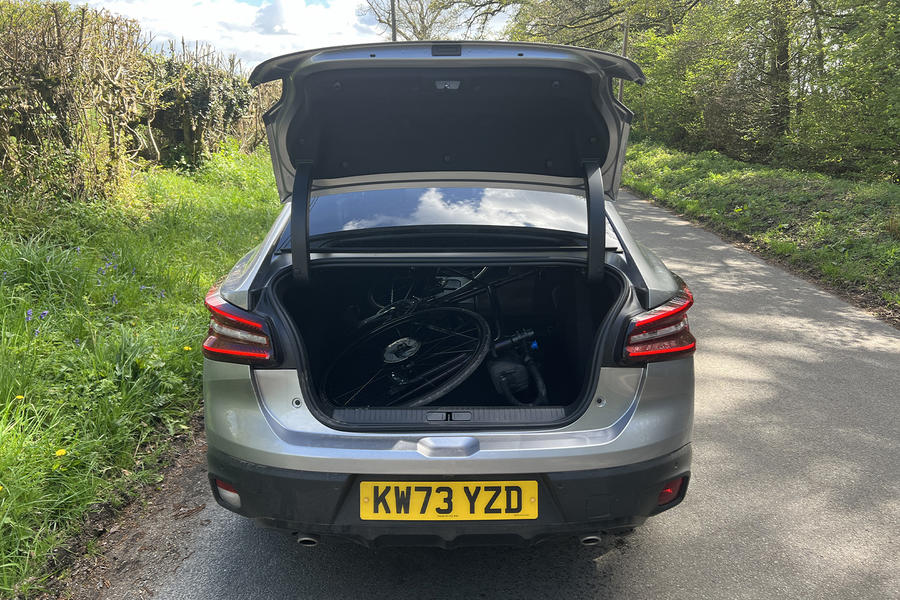
Mileage: 3959
For every pro of switching from electric to petrol there is seemingly a con - 1 May
As the petrol C4 X is largely identical to the electric -C4 X, my transition from one Citroën saloon to the other has been smooth.
It remains a very comfortable place to sit, as practical as ever and as easy to drive, making my routine travels between London and Berkshire a doddle.
I mentioned previously that I was curious to see how the ICE car would compare in terms of relaxation, isolation and quietness, which the EV excelled at. Well, several hundred miles later, it's clear that it's a mixed bag.
The ride is equally pleasant as in the EV - soaking up most bumps and divots easily - but the engine feels strange in a car like this.
The 1.2-litre three-cylinder turbo Puretech unit under the bonnet here is actually the same as the one in my first Autocar long-termer, a 2021 Vauxhall Mokka.
While the -C4 X's electric powertrain was silent and composed at all times, this petrol one is loud and bizarrely pumps some artificial engine noise into the cabin.
Not that it's an unpleasant sound (it gives muscle car vibes, sort of, but it doesn't hurt this Citroen's laid-back, comfort-focused profile. The C4 X's automatic gearbox is similar to that in my old Mokka, too.
I complained about it at the time for being too slow to react off the line, and that's the case again here. As it is with the frustrating engine start-stop function.
Low-speed driving is also ript quite as easy as in the e-C4 X, which essentially has no gears at all. This means going through the capital at 20mph now requires me to focus more closely on the speedometer.
Thankfully, the C4 X makes up for this on longer drives. It's brilliant at 70mph - and quite efficient too. Several times it has achieved more than 50mpg, and a recent fill-up of its 50-litre tank prompted a prediction of 475 miles on the digital driver's display.
That prediction will constantly update and change throughout your journey, depending on how you are driving. I left Hungerford on one trip with 475 miles on the screen, but after travelling 75 miles it had increased to 520 miles. On another trip, it rose from 285 to 350 miles. And I thought, post-EV, range anxiety would be a thing of the past.
Love it
Feels like a race car
The ë-C4 X’s faux-leather seats were comfy, but the Alcantara upholstery in our car makes the C4 X feel far more premium.
Loathe it
Annoying touchscreen
It’s distracting to use and swipe through Citroën’s menus on the move. Thankfully, wireless Apple CarPlay is included as standard.
Mileage: 3276
Life with a C4 X: Month 3
Frustrating gear selector returns - 24 April
The gear selector is the same in my new petrol C4 X as in my old electric ë-C4 X. Sometimes it takes several presses before it decides to switch, which can make manoeuvring quite frustrating. It’s a Stellantis parts bin item that features on most of the model range, though, so there’s no escaping it.
Mileage: 3003
Easygoing electric crossover makes way for something completely similar - 10 April
Can you believe we're already into April? Well, the intermittent showers confirm as much, and I started my spring cleaning with the inside of my e-C4, as a man from Citroen was coming to swap it with a petrol-engined version of the same model.
I mentioned before how the general vibe of our electric saloon/ hatchback/crossover was genuinely relaxing, and I still think that today. From charging its battery to taking long-haul trips to the coast, it was a pretty easy thing to live with.
Outputs of 134bhp and 192lb ft of torque were always enough for me. The e-C4 X took a relatively pedestrian 10sec to get to 60mph, but I didn't feel like it needed to be quicker. Most of the time I would just stick it into Eco mode, sit back and cruise.
That said, range was hit or miss even in that most frugal setting. Shorter city drives would match with ease the advertised efficiency (which leads to the 221-mile official range), but stride out onto a motorway and that figure would soon plummet.
One time I dwindled the battery down to 10%, which, according to the digital driver's display, equated to just 14 miles left in the bank. I know it's all dependent on driving style, speed and weather, but if 10% equates to 14 miles, that's just 140 miles in all, which is some way below the claimed average. It's also an average of around 2.8mpkWh, which is poor compared with some other, heavier EVs I've driven before, including the BMW iX1 and even the Ssangyong (now KGM) Korando E-Motion.
However, it's important to note that while the Ssangyong was, like the Citroën, run through winter, I had the BMW through the peak of summer, when EVs are expected to perform far better in terms of efficiency. The -C4 X definitely felt its lack of a heat pump.
Excuse me while I bore you with some numbers. In total, over the past four months, I spent £453.94 charging the -C4 X. More than half of that (£285.98) came from a 7kW Pod Point home charger, £130.77 from Gridserve fast chargers, £22.86 from Chargemaster units and £14.33 from a Tesla Supercharger.
Additionally, in all my time with the car, I didn't encounter a single charger failure or error, which I think is a testament to how our charging network is strengthening - although maybe I just got lucky, given my Poor luck with the iXl before. Another caveat here is that the Citroën wasn't the most exciting car to drive - but then you could probably guess that just by looking at it. And as London is now blanketed by not only a 20mph speed limit but also a heinous epidemic of potholes, I wasn't too upset by this.
Overall, I found life with the e-C4 X to be simple and stress-free if largely unexciting, and I'm intrigued to see if it will be the same with my new CA X. I'm curious about the move not least because one of the EV's best qualities was its interior isolation and quietness, which I believe are best served by an almost-silent electric powertrain.
Citroën offers the internal combustion-powered C4 X with a choice of petrol and diesel engines. The petrol, which uses the Puretech 1.2-litre three-cylinder turbo unit familiar from across the Stellantis line-up, comes with either 98bhp and a six-speed manual gearbox or 128bhp and an eight-speed automatic. The diesel is a 1.5-litre BlueDi four, also with 128bhp and an eight-speed auto 'box.Perhaps the bigger draw for the petrol C4 X is its price. The entry-level You specification, which is available only with the 98bhp petrol engine, is priced at just £19,322, which is cheaper than a Volkswagen Polo and buys you a much more spacious and comfortable car.
My car, in range-topping Max specification, is priced at £25,820, which gets a suite of advanced safety technology, adaptive cruise control, front and rear parking sensors with a reversing camera, automatic adaptive headlights and an electrochromic rear-view mirror, which should help me see a bit better at night.
Ultimately that's a lot of car for the money, and it's around £10,000 less than the EV, if you were to buy it new. I say that because secondhand values of electric cars have plummeted over the past year or so, meaning many drivers might well be tempted to buy a used e-C4 X.
At the time of writing, a major car auction site has 114 examples on sale - with a handful coming in at less than £20,000. Several of those have never been driven, except to leave the factory. It's pretty staggering to see, especially when you can find in excess of 20 barely run-in examples of the e-C4 - the e-C4 X's regular hatch sibling - for less than £16,000.
I've also never seen another C4 X on the road. It seems the hatchback version is far more popular. Either way, I'm now in a petrol saloon for the next few months. Watch this space as I get to grips with all it has to offer.
Mileage: 10,223
Life with an E-C4 X: Month 2
Electric tailgate is a missed feature - 21 March
It’s no doubt a premium feature, but I do miss having a powered tailgate. This saloon is quite low to the ground and I’m 6ft 2in, so I have to bend awkwardly to reach the release button down by the bumper. That said, the lowness does make it easier to load the boot with luggage.
Mileage: 7482
Is this EV twice as good as a petrol C4? Jonathan Bryce isn't convinced - 3 March
Having driven and liked the Citroën C4 in petrol guise, I was intrigued to see if the electric version could continue the trend, which meant borrowing Jack Warrick's -C4 X saloon for a week.
It was clear very early on that it was one of the most comfortable cars I've driven. But is it a good electric car? I'm not so sure. Initially, I was pleasantly surprised to find it had a very practical interior, with enough space to store all my office jetsam.
For instance, the door pockets are cavernous and there's even a coat hanger that pops out of the dash. It makes me think Citroën had high-mileage fleet drivers in mind during development.
If you're looking for a car to simply let you get in and drive away, though, the -C4 X (or at least our ë-C4 X) isn't the most welcoming. I pushed the starter button once and nothing happened. I pushed it again and still nothing.
A third time? You might get something (I often did, but a fourth try is never far off. And I was not alone in having this issue: colleagues have struggled with temperamental electronics, too.
I was also fighting to navigate an ergonomically troubled dashboard. Wrapping my head around Citroen's infotainment was difficult at first, and I didn't even notice the 'home' menu on the touchscreen until after three days with the car.
Even then, I only found it because somebody showed it to me. I assumed the button with a house symbol next to it would take me there, but after I pressed it, the screen did nothing
The car redeemed itself on day two, however. I had to get to Gatwick airport, which meant motorway driving and bumpy surfaces that would put the suspension to work.
I had heard good things from my colleagues, and suffice to say I wasn't let down. The e-C4 X soaks up bumps and potholes with a measure of relaxation that almost makes it characterful.
Meanwhile, the light steering makes it very easy to manoeuvre, if you can forgive the lack of engagement. It also has a boot big enough to swallow a large suitcase and several jackets, at 510 Litres, although the opening could do with being wider.
The cars range wasn't a huge concern that day, because it was a relatively mild morning (8deg C) and the driving was mostly on motorways. On the 52-mile round trip, I stayed below 65mph and it averaged 4.0mpkWh. I returned having reduced the trip computers range prediction by around 80 miles. Not the best.
I felt strong range anxiety a couple of days later. I was due to travel a 94-mile round trip to Bicester Heritage and made sure I left with a full charge. The car predicted 216 miles.
I wanted to see how far I could go without using any of its battery-draining systems, like the air conditioning and radio, and I stuck to 56mph the whole time on the M40, even slipstreaming trucks.
It was uncomfortable (I could see my breath most of the way), dull and not worth the hassle. I arrived at Bicester with a predicted range of 123 miles, so I had used 93 miles on a 47-mile trip with everything switched off. Oh dear.
A difficult pill to swallow, then, and it's made worse by the fact that this car costs nearly £40,000 - twice as much as the £19,495 petrol C4.
Love it
Can kick back
It’s supremely comfortable and relaxing on long distances, so long as you know when and where you will be able to charge.
Loathe it
But can't relax
Cold weather and speeds above 65mph make the range drop faster than an anchor.
Mileage: 7255
Life with an E-C4 X: Month 1
Outstanding comfort and superb urban efficiency make for a happy commuter - 21 February
The e-C4 X's comfort levels are really impressive.
In fact, Id go so far as to say it's one of the most relaxing cars I've driven. Not only are the seats plush and comfortable but also the cabin is well insulated from road and wind noise.
Even on the most stressful roads (looking at you, London's North Circular), the silent powertrain and easy-going steering make life much more serene.
This has made my crack-of-dawn journeys from north London to the Autocar office in Twickenham a particularly easy task - and the French EV's efficiency bolsters its pacifying credentials even further. On my 20-odd-mile urban commute, it regularly returns 4.5mpkWh.
With the battery having a usable capacity of 46.2kWh, that means it returns a range of around 208 miles on a single charge. Considering that I drive around with the air conditioning on (albeit on the lowest fan speed setting), I'm pretty happy with that figure.
Overall, it's averaging around 3.9mpkWh, which translates to a slightly more disappointing 180 miles of range on a charge.
But I have been quite lucky. This winter has been relatively mild, so I've not needed to crank up the climate control to clear ice from the windscreen, warm up the cabin or demist. I do wonder how badly the range will be affected if temperatures drop below zero - something all EVs really hate.
The e-C4 X is at its best in Eco driving mode, rather than Normal or Sport. Not only do you gain an additional 20 miles of predicted range as a result but there's also still ample acceleration and enough power for cruising at 70mph. It's perfect for London's 20mph zones.
While the cabin is all about driver relaxation, I've had some issues with its technology. The infotainment system is a pain to use on the move, because everything is navigated with onscreen swipes and drag gestures and the voice assistant pops up while I'm chatting with my passenger.
The resolution of the digital screen behind the steering wheel is also really poor compared with what you see in new cars from other Stellantis brands. It even cuts off some of the text on the right-hand side of the screen when you've plugged the car in to a charger.
I instead mostly just refer to the digital head-up display, which shows me all the information I need - even if, at 6ft 2in, I am slightly too tall for it.
Love it
X-Rated
The 510-litre boot is a decent size and some 130 litres bigger than that of the ë-C4 hatchback.
Loathe it
Letting it slide
The seats adjust electrically but not for moving back and forth, which I always forget.
Mileage: 5739
Welcoming the E-C4 X to the fleet - 7 February 2024
The Citroën e-C4 X is a hard car to classify, even when you've spent a bit of time with one, as I have since ours arrived on the long-term test fleet.
The EV sits intriguingly within the increasingly blurred lines that separate different car categories, riding slightly higher than a traditional saloon but not quite by enough that you could call it an SUV. Coupé-SUV hatchback?
Raised fastback saloon? One of those descriptions is probably correct. Citroën itself calls the car a "fastback with the modern look of an SUV", so that's cleared that up...
One absolutely clear thing is that Citroën has stayed true to its comfort-biased roots because the e-C4 X has already made a case for it being among the Stellantis group's most relaxing cars to drive.
This electric fastback prioritises comfort above all else - a point emphasised by its gloriously plush seats and bump-absorbing ride.
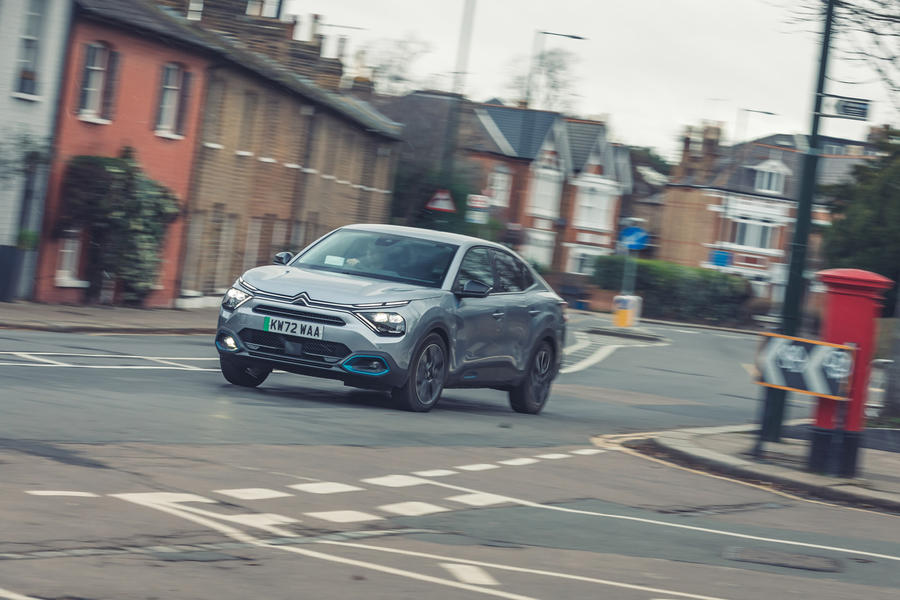
To that end, it's equipped with the French brand's Advanced Comfort suspension, which features dual hydraulic stops at the front and rear. In some ways, it feels like a Rolls-Royce Spectre for the everyman.
Okay, so obviously it's not going to be taking on the £330,000 ultra-luxurious Spirit of Ecstasy in any forthcoming comparison tests, but it is jolly nice inside and it comes with a 10.0in touchscreen with wireless Apple CarPlay and Android Auto, plus a crisp head-up display, as well as a 5.5mm digital screen behind the steering wheel.
It feels very quiet on the move too. There are no rattles inside, road noise is kept to a minimum and I've struggled to detect the sound of wind rushing past, even on faster roads.
The C4 X uses the same e-CMP platform as several other Stellantis models, including the DS 3, the Peugeot 2008 and the smaller Vauxhall Corsa, and it also shares much of its internals with the electric versions of those cars.
You could even, in effect, think of this car as an electric version of the Peugeot 408, which was run by chief sub-editor Kris Culmer towards the end of last year.
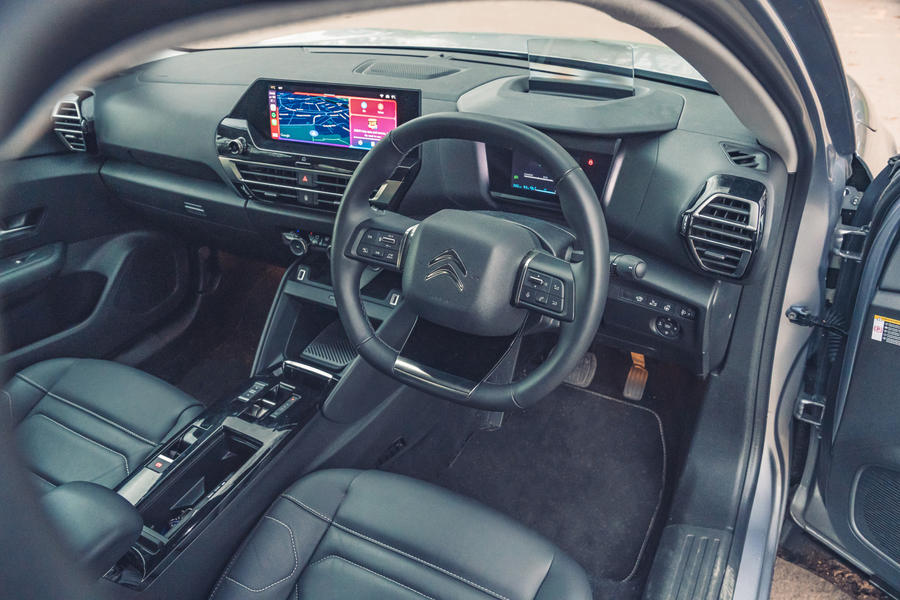
Anyone eyeing up an -C4 X is probably looking for an EV with practicality in mind, and it doesn't disappoint on that front. There's 510 litres of boot space with the rear seats raised and that increases to 1360 litres when they're folded. That compares favourably with the 425 litres offered by the Tesla Model 3 and the 405 litres of the Polestar 2.
There's room for three adults to fit comfortably in the back too. Where the e-C4 X is widely outclassed, though, is on range. Its 50kWh battery (46.2kWh usable capacity) is claimed to offer just 221 miles on a single charge, although Citroen says this can rise as high as 303 miles in the city. That's a figure I'll certainly be putting to the test, because my driving will be split mostly between London use and longer stints on the motorway.
Power looks relatively modest on paper as well. A single, front-mounted permanent magnet synchronous motor supplies 134bhp and 192lb ft of torque. However, so far I've found it to be more than adequate in most situations. It helps that the 1623kg kerb weight is fairly light for an EV.
Besides, the e-C4 X is a car to be driven in a manner befitting its aura of calm, rather than ragged around corners. It's certainly no driver's car and nor is it intended to be one, as its leisurely 0-62mph time of 10.0sec attests. In that respect, it will be a marked contrast to the 308bhp BMW iX1 that I ran most recently.
The e-C4 X is priced from £32,195 but in Shine Plus form starts at £35,495, rising to £37,140 with the options fitted to ours. Beneath this range-topping model are the more affordable Sense and Shine trims.
Owners get a lot of equipment for their money. In addition to LED headlights, a reversing camera, dual-zone climate control, automatic wipers and a heated steering wheel (which are all standard), our car features optional metallic paint, wireless smartphone charging and a tablet cradle to keep your passenger entertained on the move.
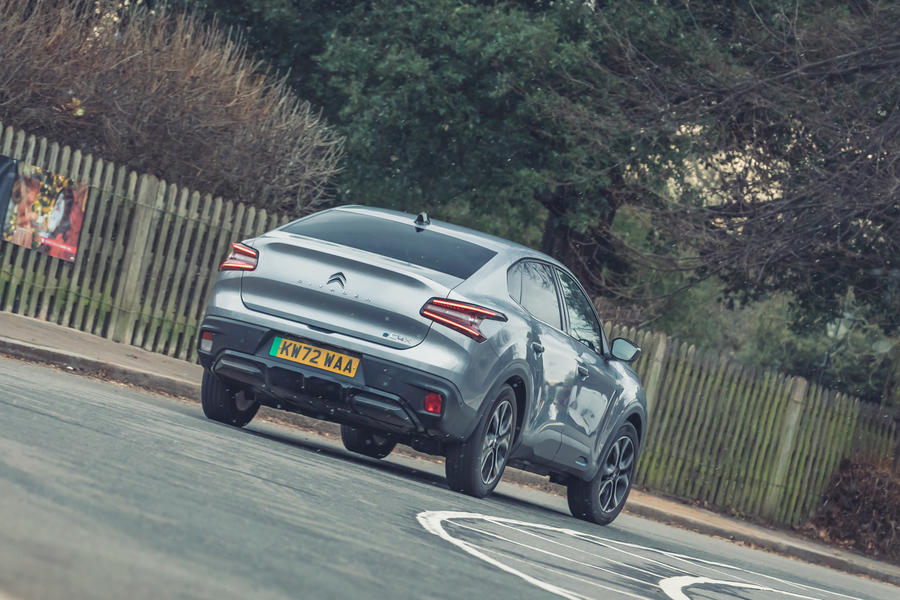
The optional Hype Black interior ambience pack fitted to our car is also worth mentioning because it's all very Citroën. It adds grey stitching, heated front seats, a plusher leather steering wheel, four-way adjustable electric seats and electric lumbar support and massage functions.
By spanning the saloon and SUV classes, the e-C4 X finds itself up against a huge range of competition from both segments. Our job over the coming months is to see if it's up to that task. First impressions suggest it could be a good option for those seeking an affordable electric company car, so that will be on our radar too.
And that's not all. While this electric version of the C4 X has been on sale since 2022, Citroen has now also decided to bring its internal combustion equivalent to the UK this year in response to customer demand.
So we plan to switch to a petrol car down the line, which should make for an interesting comparison of two comfort-driven sibling models. But we're in no rush to find out which C4 X is best. This simply isn't that kind of car.
Second Opinion
It flies under the radar and it’s so very comfortable – two favourable qualities compared with big, bulbous SUVs. I hope Jack has more luck in coaxing a decent range out of it, though. In my experience, it stopped far short of the manufacturer’s claim, even with ‘wasteful’ systems turned off.
Jonny Bryce
Citroen E-C4 X 50kWh Shine Plus specification
Specs: Price New £35,495 Price as tested £37,140 Options Hype Black interior ambience pack £800, Platinum Grey metallic paint £595, wireless smartphone charger £150, Citroën Smart Pad Support £100
Test Data: Engine 1x front-mounted electric motor Power 134bhp Torque 192lb ft Kerb weight 1623kg Top speed 93mph 0-62mph 10sec Fuel economy 4.4mpkWh (claimed) CO2 0g/km Faults None Expenses None
2024 Used Porsche Taycan Cross Turismo Long-Term Test by Giga Gears
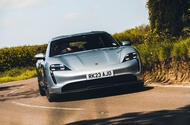 Depreciation-dodging example of Porsche’s electric estate joins the fleet
Depreciation-dodging example of Porsche’s electric estate joins the fleet
Why we’re running it: Can a cut-price approved used electric Porsche match the richly satisfying ownership experience of a new one?
Month 1 - Specs
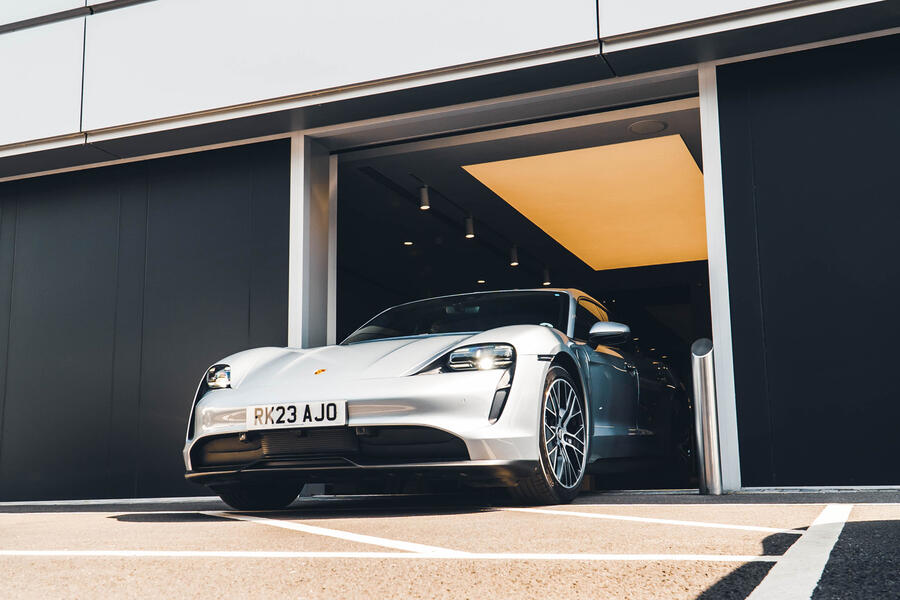
Life with a Porsche Taycan: Month 1
Welcoming the Taycan to the fleet
How you view the second-hand market for electric cars might depend on whether you're a glass half-empty or glass half-full sort of person. Or, perhaps, whether you're looking to sell an electric car you bought new or pick up a used bargain.
Take this latest addition to the Autocar test fleet: a 'used' Porsche Taycan Sport Turismo from its maker's approved used scheme. It's an early 23-plate car that arrived with us with just under 9000 miles on the clock and a known ownership history (full disclosure: it's been well used on Porsche's press fleet).
Had you bought this car new in 2023 it would have cost £90,438. Now? Its value at the time of handover is about £68,000.
Given Porsche's reputation for robust used values (a hybrid Panamera of similar age and mileage and which cost less initially is priced in the mid-£70k region), that's probably a shock to many, especially those who bought a Taycan outright or on PCP. But for savvy used buyers it represents a comparative bargain route into ownership of not only a Porsche but also one of our favourite electric cars.

Granted, for a similar outlay you could have a brand-new Hyundai Ioniq 5 N, but really, how many thousand drive modes and settings do you want when you can have an EV dripping in Porsche's signature sheen?
There are many reasons why the used values for most electric cars (sharp devaluation isn't limited to the Taycan by any means) have struggled.
For one, the ZEV mandate requiring manufacturers to sell more EVs has put pressure on prices when new (albeit often hidden using offers and incentives), while any used EVs manufacturers sell through their official schemes don't count towards those targets.
There are also no tax breaks on offer for business or fleet buyers for used EVs- and, meanwhile, just over three years after the Taycan's launch and with a facelift having just arrived, there's a relative glut of ex-fleet and PCP examples arriving on the market.
Just as significantly, there's still some scepticism about taking on a used electric car. Given the recent rate of EV progress, will it be as outdated as a BBC Master in a few years time? Will the battery life suddenly and dramatically degrade to the point that the car is unusable? Such concerns are common with new technology.

So with an increasing number of used EVs on the market, it felt like a good time to put the previously owned approach to the test - and, frankly, to get more time in a seriously good car. All of which is why I found myself at Porsche Reading to take collection of our new Sport Turismo.
Buy a car through Porsche's official used scheme and you can enjoy the exact same handover process as a new model, complete with a cover being whisked off your shiny new (to you car in the dealership and an expert on hand to talk you through all the key features with a particular brief to explain some of the nuances of EV ownership for those new to them.
That includes obvious things, such as how to plug it in, along with easily missed features such as where the 'frunk' is or how to use the customisable buttons on the dash and steering wheel.
Anyway, if you'll permit me to return to my tortured analogy about half-full glasses, as far as my new car itself is concerned, my cup runneth over. You might find plenty of used Taycans on offer, but you'd have to search hard to find another in this spec. It's a bit of a peach: a largely base-spec, single-motor, big-battery Sport Turismo.
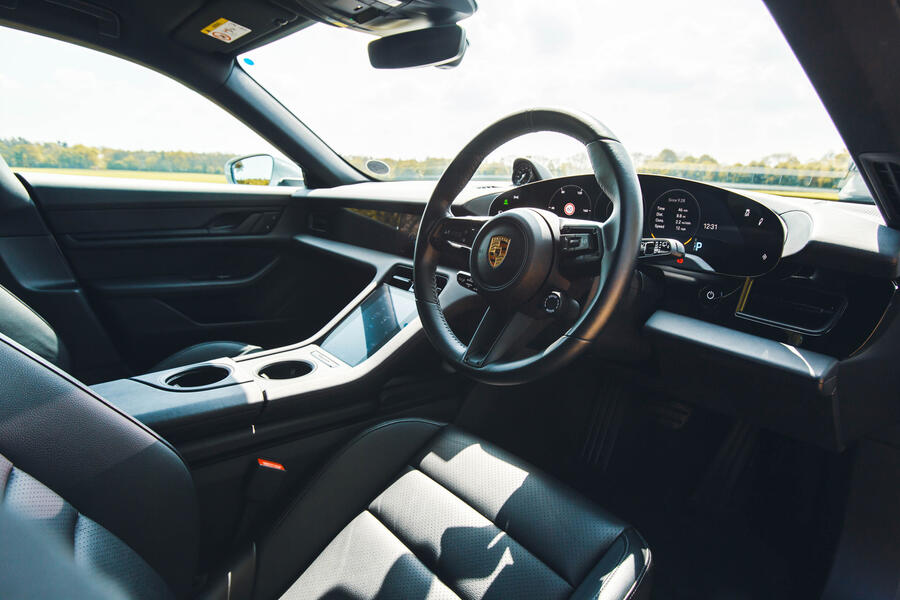
Its output of 322bhp (402bhp with launch control) may pale in comparison to a Turbo's (and it is positively demure compared with the updated model), but it's still enough for 0-62mph in 5.4sec. And the 83.7kWh (usable) battery means it has an official range of 304 miles.
I'll take that over an excess of power I'll most likely never use. It's also a rare Taycan sitting on steel spring suspension, which it combines with adaptive damping
The Sport Turismo shape adds to the appeal, offering a big-booted estate body without the slight compromise of the Cross Turismo's raised ride height.
The extended roof provides a bit more space for rear passengers, too, especially with the 4+1 seats. It's still not the world's most practical EV by any means, but this bodystyle certainly extends the car's operating window.
The interior is somewhat restrained: black is the predominant colour, and it's generally at the more sober end of the Porsche line-up. That suits me nicely, and the sports seats are proving comfortable so far.
There are other perks: our car came to us with a contract to use the Porsche Charging Network- it's not offered as standard with a used Taycan, but you can buy access.
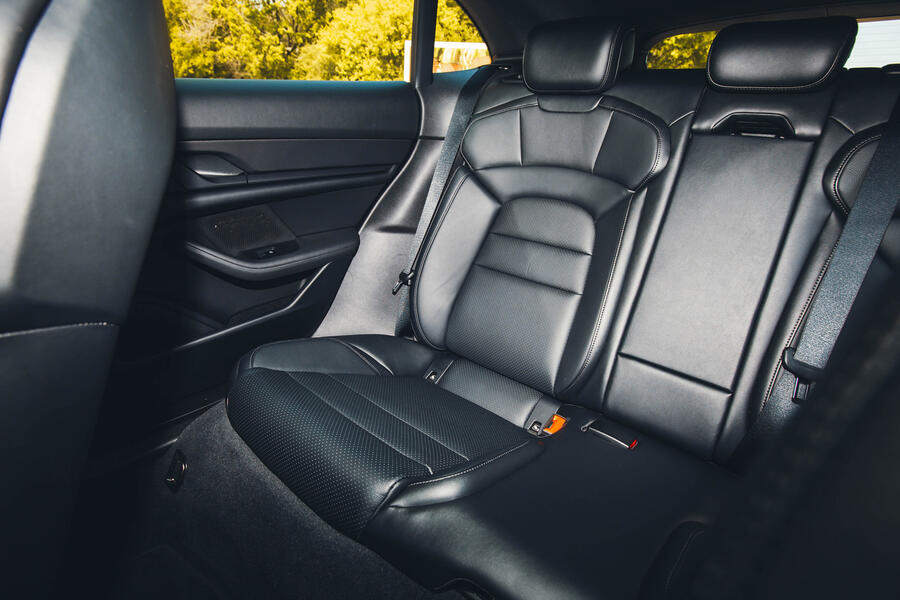
Using an RFID card, your key fob or the My Porsche app, you get one-touch access to any charger part of that network. You will need to use the app to find them, but it includes the fast chargers found at many Porsche dealers and Ionity and BP forecourts.
On some you will also get a discount reducing significantly the cost of charging. The network info is integrated into Porsche's nav system, so plot in a long trip and it will work out where to stop and how long to charge for while monitoring real-time charger availability.
Initial impressions are good, which you would expect: there's a reason the Taycan is one of our favourite electric cars, and the improvements to the recent facelifted model don't really detract from older examples such as this.
We'll judge that more over time, of course, but just as important here will be to gauge the ownership experience for used buyers drawn in by those headline discounted prices.
They might be painful reading for those set to lose out due to slipping residual values, but a cut-price route into Porsche and electric car ownership is a mighty enticing prospect for those looking to buy.
Second Opinion
James has done a fine job intellectualising the higher end of used electric car pricing structures, but I feel I should add something here: Taycan Sport Turismos are really cool. Porsche? Tick. Estate? Tick. And 0-62mph in less than six seconds? Tick!
Murray Scullion
Used Porsche Taycan Sport Turismo specification
Specs: Price New £80,200 Price as tested £90,438 Options Performance Battery Plus £4454, 20in Turbo Aero Wheels £1676, Sport Chrono Package £875, Dynamic Silver Metallic paint £852, park assist £575, 4+1 seats £371, ambient lighting £329, Driver Memory Package £282, gloss black side window trims £269, electric folding mirrors £231
Test Data: Engine 2x permanent magnet synchronous motors Power 322bhp Torque 627lb ft Kerb weight 2295kg Top speed 155mph 0-62mph 5.4sec Fuel economy 3.2mpkWh (claimed) CO2 0g/km Faults None Expenses None
MG 4 2024 Long-Term Test: Giga Gears Review
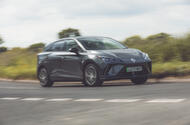 New Extended Range model has longer legs, more punch – and more to live up to
New Extended Range model has longer legs, more punch – and more to live up to
Why we’re running it: To see how 20% more claimed battery range works with a pokier 241bhp motor
Month 1 - Specs
Life with an MG 4: Month 1
Welcoming the MG to the fleet
In the two years it has been on the market, the MG 4 has made a lot of people happy. It’s ideally sized and priced, it’s more than decent to drive, the cabin accommodation is good (if you can forgive a slightly tight boot) and it generally does what it says on the tin.
As a result of these things – and, very importantly, because its name doesn’t scare people – it has been selling out of its skin. Some of those sales are to private buyers too, as opposed to business buyers who mostly choose EVs for their benefit-in-kind advantages.
In short, here’s an affordable EV that gets chosen for its innate good qualities, not just to save money.
When the chance came to run an MG 4 for a few months, I jumped at the idea, especially since this would be the new Extended Range version with 20% more battery range that promised 323 miles of cruising.
I’ve always thought that to suit my lifestyle an EV’s range has to start with a ‘3’. Then I learned that the Extended Range model also featured a new-spec 241bhp motor that shaved about a second off the 0-62mph time, leaving it at 6.5sec, which is seriously brisk.
The car – a full-house Trophy-spec version in Camden Grey (one of those non-colours I always think are chosen by people who don’t like cars) – arrived with around 5700 miles on the clock, presumably the result of testing by other hacks.
The MG 4’s interior trim materials are of nothing more than average quality, doubtless for cost reasons, but the car showed no ill effects of its busy start in life apart from an odd wear mark on the outside backrest bolster of the driver’s seat. It will be interesting to see how that develops.
To my eye, the MG’s body and paint were fine: modern manufacturing has long since reached a point where panel gaps and paint quality meet my personal standards.
The only sign of use was some wear (I’d estimate 25%) on the car’s four 235/45 R18 tyres, which seem tall enough to give the hubcap-shrouded alloy wheels a fighting chance against the kerbs of Britain. We’ll see.
The Trophy equipment level (standard with the Extended Range model) includes all manner of gadgetry: good stuff like a quick-acting sat-nav, a quality hi-fi, the world’s clearest rear camera
and a heated steering wheel, mixed with a proper plethora of electronic driver aids, most of which are tolerable except the God-awful lane keeping assistance system that grabs at the wheel like a demented driving instructor and must be turned off (via the big central screen; four pushes to get it done) before you drive.
The rest of it I can tolerate. Some of it (city collision warning, rear cross-traffic warning) I quite approve of.
Prices are interesting. MGs are billed as bargains but the Extended Range Trophy still sets you back £36,495, exactly the same money as the even faster but somewhat shorter-range XPower. (I’d have range over extra poke any day.)
Both cost a cool £10,000 more than the entry-level car and are worth it, in my opinion. The top-spec models can’t really be classed as bargains against similar-capability ICE models, but they’re affordable, especially if you’re a PCP customer.
I really liked this car as soon as I started to drive it. Despite a 1750kg kerb weight, it feels wieldy and agile. It has rear-wheel drive, its weight distribution is near 50:50, the steering is nicely weighted and high-geared, and it feels sweetly balanced in bends.
There’s no feeling (as in some EVs) of mass overpowering the tyres. My sole complaint (and I’ll get over it) is that the brakes seem overly light. Even the ride quality is nearly always okay. It’s firm and composed on smooth stuff, but it will do a bit of pitching here and there.
Still, in that regard, this £36k MG is better than my former £110k Audi. How can that be?
Range? The most I’ve been promised so far by the fascia predictor is 360 miles, which is rather more than the WLTP figure. As I sit here, I know the car will deliver 330-340 miles and that’s a big change for me.
I’m now confident on long journeys, free to recharge in public places I know well, although most of the time I can make it home without needing to. And because I’m so far averaging around 4.1 miles per kWh, the car doesn’t always seem to be plugged into a wall somewhere, glugging energy.
Best of all, I find myself choosing the MG for journeys, often in preference to the cars we own, and not for money reasons. It’s fun – not the slightly forced excitement the old MG brand once claimed for the MGB but a deep satisfaction with the comfort, quietness, steering and power delivery.
I know full well that there’s absolutely no relationship between this car and MGs of old. But just now and again, I feel there could be.
Second Opinion
I last drove an MG 4 Extended Range in winter and its, er, extended range failed to fully materialise due to slightly disappointing cold-weather efficiency. The ride and handling also felt a little clumsier than on the Long Range car. I didn’t have the car for very long, so I’m curious to see how it will perform in a longer-term test.
Illya Verpraet
MG 4 EV specification
Specs: Price New £36,495 Price as tested £36,495 Options None
Test Data: Engine 1x permanent magnet synchronous motor Power 241bhp Torque 258lb ft Kerb weight 1748kg Top speed 112mph 0-62mph 6.5sec Fuel economy 3.72mpkWh CO2 0g/km Faults None Expenses None
MG 4 EV 2024 Long-Term Test: Giga Gears Review
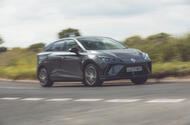 New Extended Range model has longer legs, more punch – and more to live up to
New Extended Range model has longer legs, more punch – and more to live up to
Why we’re running it: To see how 20% more claimed battery range works with a pokier 241bhp motor
Month 1 - Specs
Life with an MG 4: Month 1
Welcoming the MG to the fleet
In the two years it has been on the market, the MG 4 has made a lot of people happy. It’s ideally sized and priced, it’s more than decent to drive, the cabin accommodation is good (if you can forgive a slightly tight boot) and it generally does what it says on the tin.
As a result of these things – and, very importantly, because its name doesn’t scare people – it has been selling out of its skin. Some of those sales are to private buyers too, as opposed to business buyers who mostly choose EVs for their benefit-in-kind advantages.
In short, here’s an affordable EV that gets chosen for its innate good qualities, not just to save money.
When the chance came to run an MG 4 for a few months, I jumped at the idea, especially since this would be the new Extended Range version with 20% more battery range that promised 323 miles of cruising.
I’ve always thought that to suit my lifestyle an EV’s range has to start with a ‘3’. Then I learned that the Extended Range model also featured a new-spec 241bhp motor that shaved about a second off the 0-62mph time, leaving it at 6.5sec, which is seriously brisk.
The car – a full-house Trophy-spec version in Camden Grey (one of those non-colours I always think are chosen by people who don’t like cars) – arrived with around 5700 miles on the clock, presumably the result of testing by other hacks.
The MG 4’s interior trim materials are of nothing more than average quality, doubtless for cost reasons, but the car showed no ill effects of its busy start in life apart from an odd wear mark on the outside backrest bolster of the driver’s seat. It will be interesting to see how that develops.
To my eye, the MG’s body and paint were fine: modern manufacturing has long since reached a point where panel gaps and paint quality meet my personal standards.
The only sign of use was some wear (I’d estimate 25%) on the car’s four 235/45 R18 tyres, which seem tall enough to give the hubcap-shrouded alloy wheels a fighting chance against the kerbs of Britain. We’ll see.
The Trophy equipment level (standard with the Extended Range model) includes all manner of gadgetry: good stuff like a quick-acting sat-nav, a quality hi-fi, the world’s clearest rear camera
and a heated steering wheel, mixed with a proper plethora of electronic driver aids, most of which are tolerable except the God-awful lane keeping assistance system that grabs at the wheel like a demented driving instructor and must be turned off (via the big central screen; four pushes to get it done) before you drive.
The rest of it I can tolerate. Some of it (city collision warning, rear cross-traffic warning) I quite approve of.
Prices are interesting. MGs are billed as bargains but the Extended Range Trophy still sets you back £36,495, exactly the same money as the even faster but somewhat shorter-range XPower. (I’d have range over extra poke any day.)
Both cost a cool £10,000 more than the entry-level car and are worth it, in my opinion. The top-spec models can’t really be classed as bargains against similar-capability ICE models, but they’re affordable, especially if you’re a PCP customer.
I really liked this car as soon as I started to drive it. Despite a 1750kg kerb weight, it feels wieldy and agile. It has rear-wheel drive, its weight distribution is near 50:50, the steering is nicely weighted and high-geared, and it feels sweetly balanced in bends.
There’s no feeling (as in some EVs) of mass overpowering the tyres. My sole complaint (and I’ll get over it) is that the brakes seem overly light. Even the ride quality is nearly always okay. It’s firm and composed on smooth stuff, but it will do a bit of pitching here and there.
Still, in that regard, this £36k MG is better than my former £110k Audi. How can that be?
Range? The most I’ve been promised so far by the fascia predictor is 360 miles, which is rather more than the WLTP figure. As I sit here, I know the car will deliver 330-340 miles and that’s a big change for me.
I’m now confident on long journeys, free to recharge in public places I know well, although most of the time I can make it home without needing to. And because I’m so far averaging around 4.1 miles per kWh, the car doesn’t always seem to be plugged into a wall somewhere, glugging energy.
Best of all, I find myself choosing the MG for journeys, often in preference to the cars we own, and not for money reasons. It’s fun – not the slightly forced excitement the old MG brand once claimed for the MGB but a deep satisfaction with the comfort, quietness, steering and power delivery.
I know full well that there’s absolutely no relationship between this car and MGs of old. But just now and again, I feel there could be.
Second Opinion
I last drove an MG 4 Extended Range in winter and its, er, extended range failed to fully materialise due to slightly disappointing cold-weather efficiency. The ride and handling also felt a little clumsier than on the Long Range car. I didn’t have the car for very long, so I’m curious to see how it will perform in a longer-term test.
Illya Verpraet
MG 4 EV specification
Specs: Price New £36,495 Price as tested £36,495 Options None
Test Data: Engine 1x permanent magnet synchronous motor Power 241bhp Torque 258lb ft Kerb weight 1748kg Top speed 112mph 0-62mph 6.5sec Fuel economy 3.72mpkWh CO2 0g/km Faults None Expenses None
